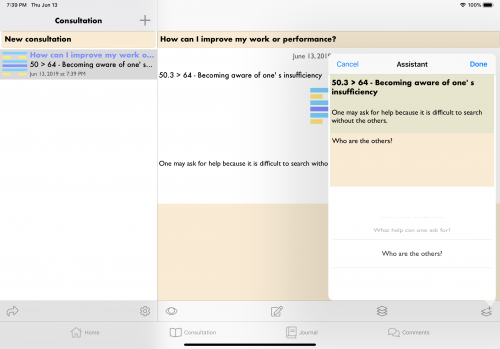43.5: Bad herb gone good
The Yi Jing comments have been made by humans, and as such they carry their lot of misunderstandings and mistakes. I have pointed already that mantic formulas like "Fortune" and "Misfortune" contradict the comments of 16.1 and 58.5. But there are also more subtle errors. 43.5 is one of them.
43.5 (43 > 34)


Situation
Others return because one didn't want to continue.
This comment on the situation has been made by consulting the I Ching. As you can see there is no mention of good or bad here. Thus, it made me ponder whether that 43.5 was always describing a bad herb, or if it could also describe something good returning.
Here is Richard Wilhelm's comment, translated in English by Cary F. Baynes:
In dealing with weeds,Firm resolution is necessary.
Walking in the middle
Remains free of blame.
Weeds always grow back again and are difficult to exterminate.
What is interesting here, is that weeds are mentioned, so the advice is to exterminate them with a firm resolution. What is even more interesting is that Richard Wilhelm adds:
So too the struggle against an inferior man in a high position demands firm resolution.
The man in in a high position is deemed "inferior". And thus it seems to be a bad thing that this man always come back to pester us like a weed.
Let's now examine what James Legge had to say about this line:
The fifth line, undivided, shows (the small men like) a bed of purslain, which ought to be uprooted with the utmost determination.
Purslain? Ha ha. It must be a very bad weed. Out of curiosity, I have googled purslain to discover what it was. Here is an excerpt of the Wikipedia entry:
Although purslane is considered a weed in the United States, it may be eaten as a leaf vegetable.[6] It has a slightly sour and salty taste and is eaten throughout much of Europe, the Middle East, Asia, and Mexico.[1][7] The stems, leaves and flower buds are all edible. Purslane may be used fresh as a salad, stir-fried, or cooked as spinach is, and because of its mucilaginous quality it also is suitable for soups and stews.
And then, about nutrition:
Purslane contains more omega-3 fatty acids (alpha-linolenic acid in particular[13]) than any other leafy vegetable plant. Studies have found that purslane has 0.01 mg/g of eicosapentaenoic acid (EPA). It also contains vitamins (mainly vitamin A, vitamin C, vitamin E (alpha-tocopherol),[14]vitamin B, carotenoids), and dietary minerals such as magnesium, calcium, potassium, and iron.
The purslain contains low fat, vitamin C, and omega-3, it is an excellent vegetable food! So, why would you uproot with the utmost determination such a wonderful plant?

